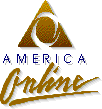14. Ques: What are those funny signs & symbols I see?
1. Weird groups of punctuation marks
2. Junk messages in binary newsgroups
3. Gobbledegook messages in far-eastern newsgroups
MarkAllott answers :
Groups of puctuation marks grouped together in an email or a
newsgroup post are called emoticons (emotional icons). They are
used to help convey the feelings of the writer of the article. The
way to "read" them is to tilt your head to the left and look at
them as if they were written down the screen. (An alternative
method is to move your screen on its side - but that could be a
little difficult at times )
A few examples of emoticons are as follows :
:-) Standard Smiley
;-) Winking Smiley
:-( Sad
:-|| Angry
8-) Wears glasses
B-) Wearing sunglasses, or Batman
:-{ has a moustache
2. Junk messages in binary newsgroups
The "junk" you can see is a binary file that has been encoded so
it can be transmitted successfully over Usenet. There are several
methods of encoding that can be used, but the most common methods
used are MIME and UUE.
See : What is MIME encoding, and how do I decode it? (FAQ Part 3)
3. Gobbledegook messages in far-eastern newsgroups
The gobbledegook you are looking at is the ASCII representation of
the far-eastern character sets. Because there are more than 255
characters (or ideograms) in the far-eastern languages, the only
way to actually display most of them is to use *two* bytes (or
characters) to represent the one ideogram. This then has the
result of increasing the number of displayable characters to 65535
combinations and is described as an ANSI WideChar in computing
terms. The downside is you need to have a special viewer that is
capable of decoding these "wide characters" into the ideograms for
display.
===== CLICK HERE TO RETURN TO MENU AT THE TOP OF THE PAGE ======



